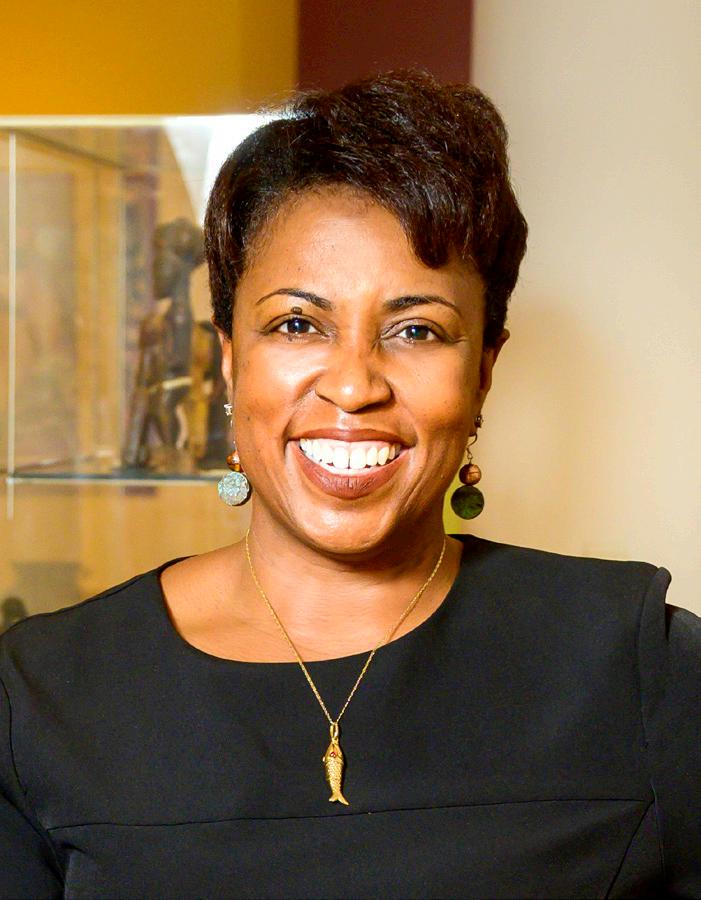
5 minute read
WHERE ARE ALL THE BLACK WOMEN IN HBCU LEADERSHIP ROLES?
from HBCU Times MAGAZINE
by HBCU Times
WHERE ARE ALL OF THE BLACK WOMEN IN HBCU LEADERSHIP ROLES?
BY DR. PATRICIA WILLIAMS LESSANE
Recently, I was assembled with three other Morgan State University leaders for a photograph that would accompany an upcoming article in the university’s magazine about each of our new posts at the university. As the four of us tried out our best professional smiles, rearranged ourselves for what we imagined were the most flattering shots, and gave the photographer a hard time about angles, staging, and lighting, I was awestruck by the company I was in—we were all African-American women who had been recently hired or promoted to significant posts at Morgan. In the last year, Morgan State University has hired or elevated women to the posts of dean, Vice-President for Institutional Advancement, Associate Vice President for Academic Affairs, and Provost and Senior Vice President for Academic Affairs. To say, that I am honored to be a part of that “number” as we say in the Black Church, is an understatement.
As a proud product of an HBCU, I have long held dreams of one day becoming a college president at a small private HBCU much like Fisk University, where I attended as an undergraduate student. In many ways, coming to Morgan is like returning home to the rich roots of Black scholastic excellence of Fisk which nurtured and nudged me into the scholar-activist and globalcitizen I am today. The rigorous foundational liberal arts training delivered by a committed and talented cadre of faculty, staff, and senior leaders encouraged me to dream big, be courageous, and always give back. But even as I think fondly back on my days at Fisk, it struck me that I couldn’t think of a single Black woman who led as a senior administrator while I was there, except one, who as of this writing is still there: Dr. Jessie Carney Smith, Dean of Fisk University Library. Of course, there were a few department chairs and an associate dean of Students, but there were no Black women vice-presidents or provosts during my time at Fisk. It would be a decade after my graduation from Fisk that the university would appoint its first Black woman president, Hazel O’Leary.
One might think—as I had before joining Morgan State University, an HBCU founded by the Baltimore Conference of the Methodist Episcopal Church in 1867 and Maryland’s preeminent public research university, that such an occurrence is commonplace at Black institutions of higher education and that the gateway to the HBCU e-suite is a more equitable path for Black women to navigate than at predominately white colleges and universities. However, the barriers to senior leadership at HBCUs, while different than those Black women face at predominately white institutions, are still barriers, nonetheless.
During my first few professional gatherings with leaders from other UNCF-supported HBCUs, I was struck by the lack of parity between African American men and women in presidential and other executive leadership roles. Even with the recent appointments of Black women to the helm of several HBCUs including Tuskegee University, Elizabeth City, and, Norfolk State University, Black men still outnumber Black women presidents.
As of 2019, Black women led 25 of the 100 historically black colleges and universities. According to a recent report by the Council for Advancement and Support of Education, this figure is only slightly lower than the 30% of American colleges and universities led by women.
The percentage of minority college presidents has slowly increased over the last 30 years. Women of color, however, are the most underrepresented in the presidency. sexism in higher education work together to render Black women invisible all while benefiting from our intellectual contributions, high drive, and commitment to scholastic and professional excellence. In many ways, HBCUs function like the Black Church—historically places of refuge, empowerment, and racial uplift where Black women work and Black men lead. But today is a new day. It is time for us to remake HBCUs in a new equitable image with gender parity that recognizes the knowledge and transformative power of Black women.
But in order for Black women to land top appointments at HBCUs and other universities and colleges, we must first be in the pipeline and hold meaningful leadership roles that drive innovation and chart new territories in teaching, research, and development and ultimately re-imagine academe so that it is more inclusive, equitable, transformative, and reflective of society today and tomorrow. More importantly, this is what is happening at Morgan State University. I am so fortunate to serve as Associate Vice President for Academic Affairs at Morgan State University to learn from my mentors, listen to my fellow colleagues and students, and lead from where I am. It is my sincere hope that someday soon, there will be more Black women counted in this number.
Led by President David Wilson, Ed.D., Morgan State University’s leadership team is diverse in race and gender with women of color holding significant posts as chairs, deans, and vice presidents. While I cannot speak to the professional aspirations of my sister-colleagues at Morgan, what I can say for sure is that given the fast-paced, innovative environment we work in, when and if opportunity knocks at any of our doors, we will be ready, equipped with the wisdom, knowledge, and experiences needed to inspire, lead, and transform the next college or university we join.
I’m honored to serve as Associate Vice President for Academic Affairs at Morgan State University; on any given day, I get to tackle high-level strategic opportunities to move The National Treasure from great to greater. It’s an opportunity I never would’ve received at my previous post at College of Charleston where I earned tenure and promotion in a position which was 95% administrative, and carried the same requirements of teaching, research, and service, as the traditional tenure-track faculty. And while I was eventually promoted to the position of Associate Dean for Strategic Planning and Community Engagement, I was required to maintain my previous position as Executive Director of the Avery Research Center for African American History and Culture, role and responsibilities at the same time. In reality, my promotion wasn’t a promotion at all. Having successfully navigated the racial and gender barriers before me, I was rewarded for my accomplishments with more responsibilities.
My collegiate experience as a student at Fisk and my professional experience at College of Charleston taught me how racism and

Dr. Patricia Williams Lessane











